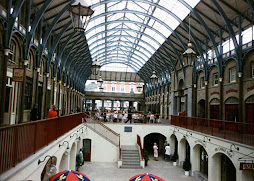Tuesday, May 11, 2010
Tuesday, January 12, 2010
lancaster house

The mancion lancaster house is located in the parish of St. James's in londondres . today lancaster is used for receptiond and conferences was buil began in 1825 ,,,, had a remodeling two yards 1913 gave it to the nation, originally as a home for the London Museum (which remained there until World War II and is now part of the *Museum of London).
lancaster house is now used of government entertainment and for conferences , beging best known in recent years for the talks in 1079 which gave independence to zimbabwe
Jorge , V 1 st batchillerat "B "
Monday, January 11, 2010
St James's Church Piccadilly

St James's Church, is an Anglican church on Piccadilly in the centre of London. It was designed and built by Sir Christopher Wern.
The church is built of red brick with Portland stones
ornaments. In the interior of the curch we can find
galleries suported by square pilars.
Henry Jermyn, in 1662, gave some land around London
to build a residential area. The field was divided into different parts, in the south side of the church there was a cemetery.
In the Second World War the parish was badly damaged because of some enemy bombers.
David Gebran and Juan Manuel Vidal 1 st Batchillerat B
Sunday, January 10, 2010
Pall Mall

Pall Mall is a street in the City of Westminister,London. The name of the street is deriver from "pall mall" a malet-and-bale game that was played there durinh the 17th century.Pall Mall is best know for being the home to various gentlmen's clubs built in the 19th century and early 20th centuries.The most famous club of all is probably the Athenaeumat 107.An other important site of Pall Mall is the Iod ( Institute of directors). It was also once the centre of the fine art scene in London; in 1814 the Rayl Academy,the National Gallery and Christie's auction house were all here, but none of then stayed for long.The club building represent the work of some of the most fashionable architects of the era.
Aitor Gasent , Adrián Sánchez , Andrea Fabiola Stuyck León 1st Batchillerat B
Tuesday, January 5, 2010
Institute of Contemporary Arts

The Institute of Contemporary Arts (ICA) was founded in 1946 in The Mall street, London. It’s an artistic and cultural centre that tried to establish one space where artists, writers and scientists could introduce, debate and display their innovative ideas.
The first exhibitions were held in rented premises. The Institute organized exhibitions of modern art and British Brutalist art and architecture.
With the support of the Arts Council, the ICA moved to its current site in 1968. For a period during the 1970s the Institute was known for its often anarchic programme and administration. Norman Rosenthal was director of exhibitions at this time, and he was once assaulted by a group of people who were living in the upper floors of the building at the time. A bloodstain on the wall of the administrative offices is preserved under glass, with a note reading "this is Normans's blood".
Between 1977 and 1990 the ICA developed a system that separate departments specializing in visual art, cinema, theater, music and performance art. A fourth department was dedicated to talks and lectures.
Maria E, Adrian I and Borja S
1st Batx B
Subscribe to:
Posts (Atom)
